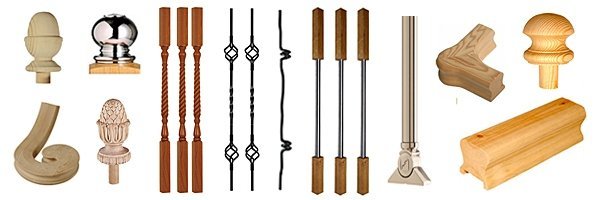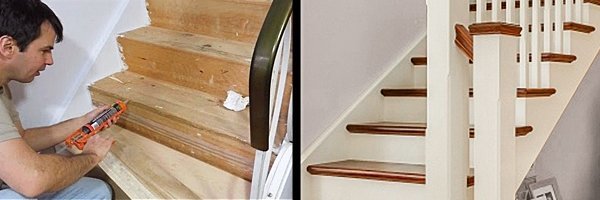|
Every part of a staircase has its own name and function, and when reading guides or following written or spoken instructions, the jargon involved may start to sound like a completely different language. The experts at Pear Stairs have put together a brief staircase dictionary to help the uninitiated. Once you have these terms under your belt, understanding the process gets far easier! |
||||||
 |
 |
|||||
|
Treads and Risers The steps on a staircase are made up of these. Treads are the horizontal sections that you stand on directly, and the risers are the vertical front parts that help to hold them up. Strings (sometimes known as stringers) These are planks or narrow sheets - usually made of wood - that run up the angle of the stairs on either side of the treads and risers. They look a little like angled skirting boards You may come across the term “cut string”, which still supports the treads but does not enclose them entirely, allowing the shape of the steps to be visible from the side. Spindles A series of shaped vertical poles filling the space between the handrail and the base rail of the staircase. These are more commonly made of metal or wood. Base rail The base rail is usually found on top of the string, and normally exists to hold the foot of the spindles, glass or anything else that constitutes the central infill of the balustrade. Newel posts These are larger vertical posts, usually placed at the top and bottom of the staircase to hold up the handrail. A newel can also be placed at a turn in the stairs. Newels are often finished with caps and undercaps - decorative parts that can be found on the top and bottom (if it is exposed) of each post. Fillets These small individual parts fit on top of the base rail between each spindle foot, serving as spacers and covering the groove that would otherwise be there. Balustrade This is a large portion of the full staircase, made up of the handrail, baserail, newels and infill (spindles, glass etc.) Rake The angled section of a staircase, running from the base to the landing. Landing A well-known term for the flat section at the top of a flight of stairs, from which the upstairs rooms of a building can be accessed. Landing Nosing The decorative trim along the edge of the landing flooring - normally found under the landing base rail and overlooking the stairwell. Apron The facade below the landing nosing covering the space between the ceiling on the lower level and the floor on the upper level of the staircase. |
||||||
| These are the basic terms you might need to get to grips with when sourcing stair components. To find out more about the variety of materials and parts available, visit our online shop - or try designing your own staircase using the StairCreator 3D planning tool. | ||||||
Staircase terminology for beginners
01/12/2017 12:00
Posted in Tips & Advice
By Alex Illidge




